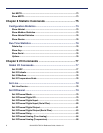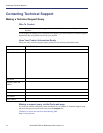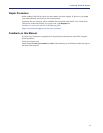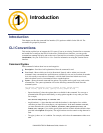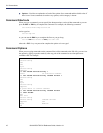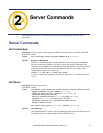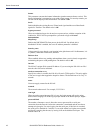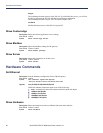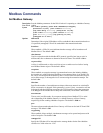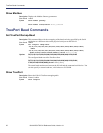
IOLAN DS1/TS2 CLI Reference Guide, Version 4.1 15
Introduction Chapter 1
1
Introduction
This chapter provides the command line interface (CLI) options available for the IOLAN. The
commands are grouped by function.
CLI Conventions
This section explains how to interpret the CLI syntax.If you are an existing Terminal Server customer
and would like to configure the IOLAN in the native Terminal Server interface, you can type the
command
ts-config to display and use the native Terminal Server interface (you must have User
Level Admin
). See your Terminal Server User Guide for information on using the Terminal Server
interface.
Command Syntax
Each command is broken down into several categories:
z Description—Provides a brief explanation of how the command is used.
z User Level—Shows which user level(s) (Restricted, Normal, and/or Admin) can issue the
command. Some commands have options that are available for one user level and not for another
level; this usually occurs when a command is valid for both Normal and Admin user levels,
where the Admin user level command will have extended options.
z Syntax—Shows the actual command line options. The options can be typed in any order on the
command line. The syntax explanation will use the following command to break down the
command syntax:
set service [dhcp/bootp on|off] [telnetd on|off] [httpd on|off]
[snmpd on|off] [spcd on|off] [syslog on|off] [dmgrd on|off]
– Square brackets ([]) show the options that are available for the command. You can type a
command with each option individually, or string options together in any order you want.
For example,
set service dhcp/bootp on telnetd off
– Angle brackets (<>) show that the text inside the brackets is a description for a variable
value that you must fill in according to your requirements. In the
set server command,
you must determine the values for
domain, internet, name, password-limit, and
subnet-bit-length, if you wish to specify them and not use their defaults (default values
provided in the Options description). The angle brackets can also contain a range that can be
used.
– The pipe (|) shows an ’or’ condition. For example, valid values for telnetd are either on or
off.




